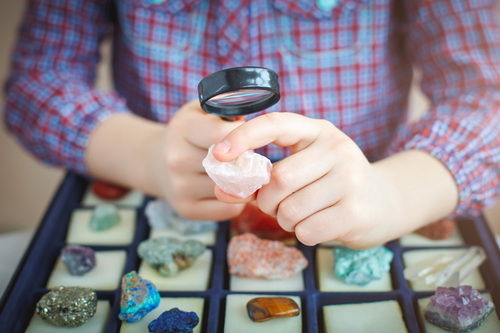
As a hobby, mineral collecting is over 500 years old, evolving from the era of gentlemen naturalists to the present era dominated by mineral quality. The mineral collecting in 2016 vastly differs from the first golden age of mineral collecting that marked the 50s and 60s, when ‘rock hounding’ became an immensely popular past time. But today, the quality of minerals is considered of supreme importance, a factor that can never be neglected. An extraordinary number of mineral discoveries have been made since 1980: Merelan Tanzanite, Red Cloud Wulfenite, and the incredible Aquamarine crystals, to name a few.
Avid mineral collectors may be driven by passion, a piqued interest in geology, or a profession in mineralogy to collect particular minerals. But whatever the reason, they all have one thing in common: having a collection to boast about, holding exhibits, and fulfilling their mineral-collecting goals proudly. Here’s how you can accomplish it all:
Be a Specialized Collector
With more than 3,000 minerals in nature, it is impossible to collect them all!
Many collectors follow the collection method of specialized collection. So, if you are a beginner, make sure you choose a category of minerals (based on locality, properties, crystal group or variances) to collect and be a specialized collector.
And if you are already a specialized collector, you are on the right track. Bravo!
Get your Tools Together
The importance of possessing the right tools for a mineral collector can’t be stressed enough. You will surely be rewarded with success when you know the right tools to take with you on your trips. Your tools should include the following:
- Hammers (sledge, geologist’s, crack and splitting hammer)
- Portable diamond saw (to extract crystals from broad rock faces)
- Heavy-duty paint brush to dust specimens
- Pocket tools (may use screwdrivers, chisels, ice picks)
- Personal protection equipment (gloves, safety glasses, etc.)
Organize your Collection
Organizing and displaying your collection is of paramount significance. You can go for thumbnail and micromount specimens, about 1 inch or less in size. As tiny crystals have almost perfect crystallization, you can easily view the crystal through a microscope. Such small specimens are kept in plastic boxes, are affordable, and take up less space.
Regardless of size, you can store your minerals in well-lit glass viewing cabinets, organized drawers, or specialized cardboard boxes. Always label your rocks with an index card, mentioning the type and locality of the mineral.
Acquire the Services of Mineral Dealerships
Well, you have to admit, everyone comes across dead ends. There might be a particular rare mineral you are looking for without any luck. Our advice? Acquire the services of mineral dealerships that not only provide rare rocks from all over the world and custom services such as display cases, curatorial services, mineral photography, provenance research, etc. Your collection will reach new heights!
